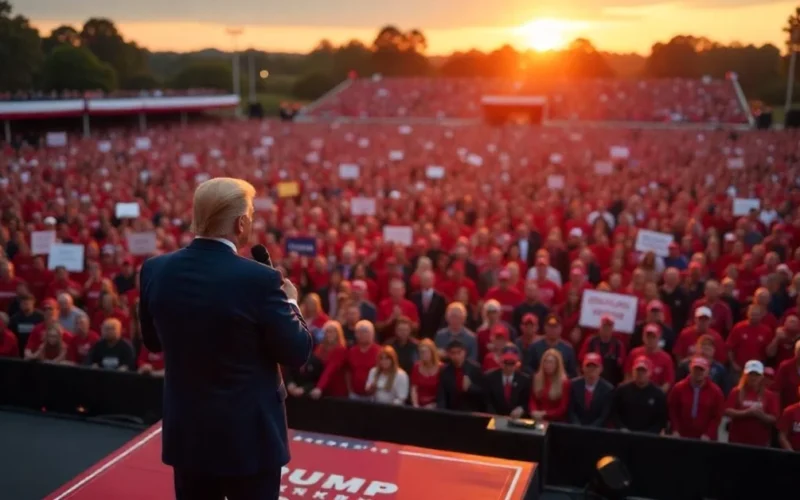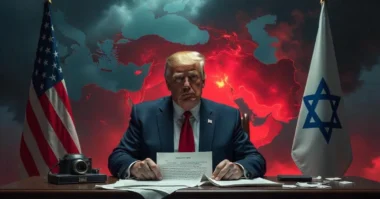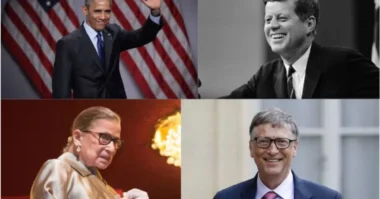Table of Contents
- A Look Back at Trump Rally Crowd Sizes Over the Years
- Trump Rally Crowd Size in 2025 – What the Numbers Reveal
- What Influences Rally Size? Key Factors to Consider?
- Trump vs Biden: Whose Rallies Draw Bigger Crowds?
- Does Bigger Crowd Size Mean Electoral Success?
- Social Media’s Role in Amplifying Rally Perception
- FAQs
- Conclusion
Trump’s rallies have always stood out not just for the speeches or the atmosphere, but for the sheer number of people who show up. The Trump rally crowd sizes have become a symbol of support, energy, and media power. Whether it’s a packed stadium or an open field, each rally draws attention not just to what Trump says but to how many people are there to hear it.
For political observers, journalists, and voters alike, Trump rally crowd sizes offer a striking visual measure of enthusiasm that can sometimes overshadow polling numbers or expert analysis. These massive turnouts are more than just gatherings; they’ve become a core part of the political narrative surrounding Trump. Crowd size is used to frame his popularity, spark debates, and even measure his influence in real time.
A Look Back at Trump Rally Crowd Sizes Over the Years
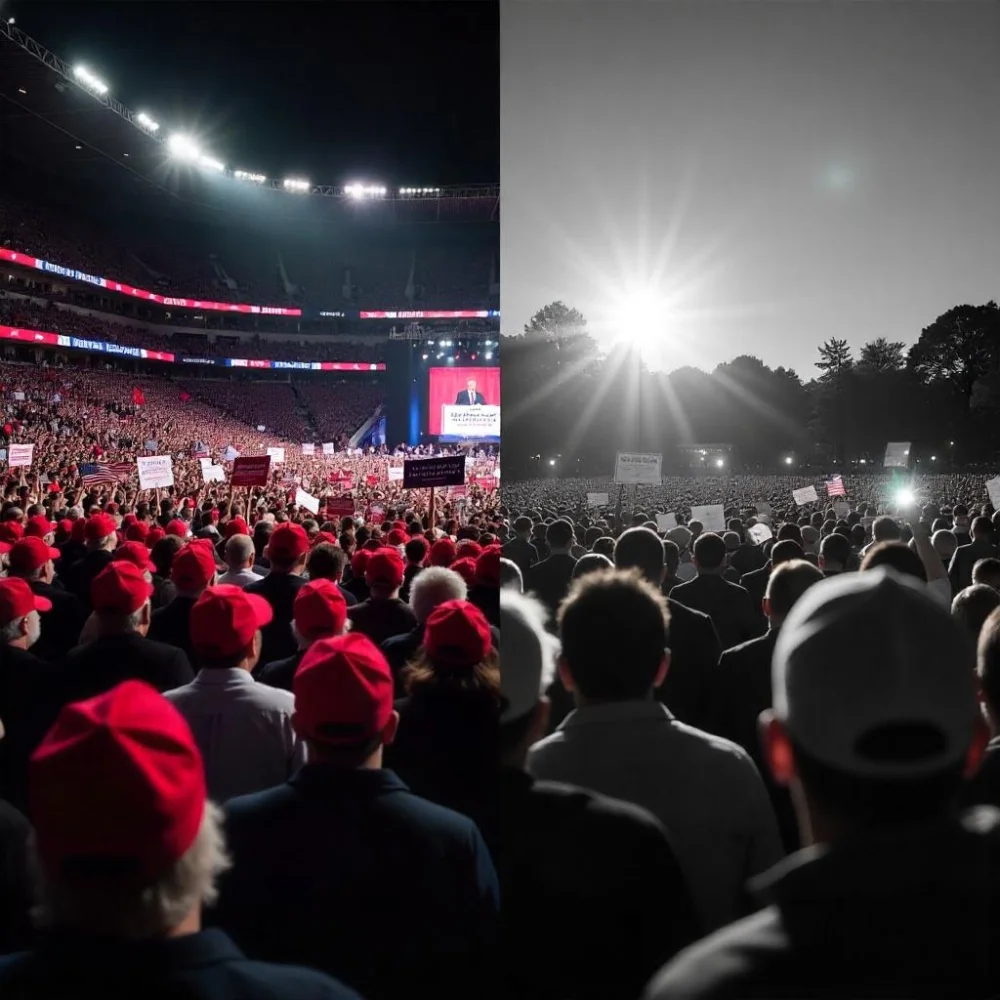
1. 2016 to 2020 – The Rise of the Mega Rallies
During his first campaign in 2016, Donald Trump introduced a new kind of rally culture, loud, massive, and made-for-TV. Some of his largest rallies saw crowds exceeding 20,000 attendees. Stadiums in Florida, Ohio, and Pennsylvania were packed, with lines stretching for miles. In 2020, even during the COVID-19 pandemic, Trump held rallies with thousands of supporters, ignoring distancing guidelines. These Trump campaign rallies became not just political events, but media spectacles that dominated news coverage. His core supporters often traveled long distances just to attend, creating a strong sense of loyalty and community around each event.
2. Post-Presidency Rally Patterns (2021–2024)
After leaving office in 2021, Trump didn’t disappear from the spotlight. Instead, he doubled down on the MAGA movement. From Arizona to Georgia, his post-presidency rallies continued, but the Trump rally attendance numbers began to show some changes. While still drawing impressive crowds, many events had smaller turnouts compared to the peak years. This was partly due to changing media interest, ongoing legal issues, and increased political competition from other Republican figures. However, the MAGA branding kept his base energized, and most events still averaged between 5,000 and 10,000 attendees.
Trump Rally Crowd Size in 2025 – What the Numbers Reveal
1. Recent Turnout Figures from 2025 Events
In 2025, Trump has already held multiple campaign events ahead of the upcoming elections. Verified numbers show that rally sizes vary depending on the location and media coverage. For example, a rally in South Carolina drew about 8,000 people, while one in rural Iowa had a turnout closer to 4,000. These figures are based on drone footage, local news reports, and journalists’ estimates on-site. Compared to previous years, the 2025 rallies seem slightly smaller but remain one of the biggest turnouts among all presidential candidates.
2. Trump Rally Attendance: Official Claims vs Reality
Trump often claims attendance numbers that far exceed what reporters and local officials estimate. For instance, at a Florida rally, Trump claimed over 20,000 attendees, while media reports capped the figure around 11,000. This gap between claimed and verified numbers has become common in Trump’s events. While supporters often believe his figures, fact-checkers and independent journalists provide more grounded data. This ongoing contrast creates a conversation around perception versus truth, something that defines much of the Trump media narrative.
What Influences Rally Size? Key Factors to Consider?
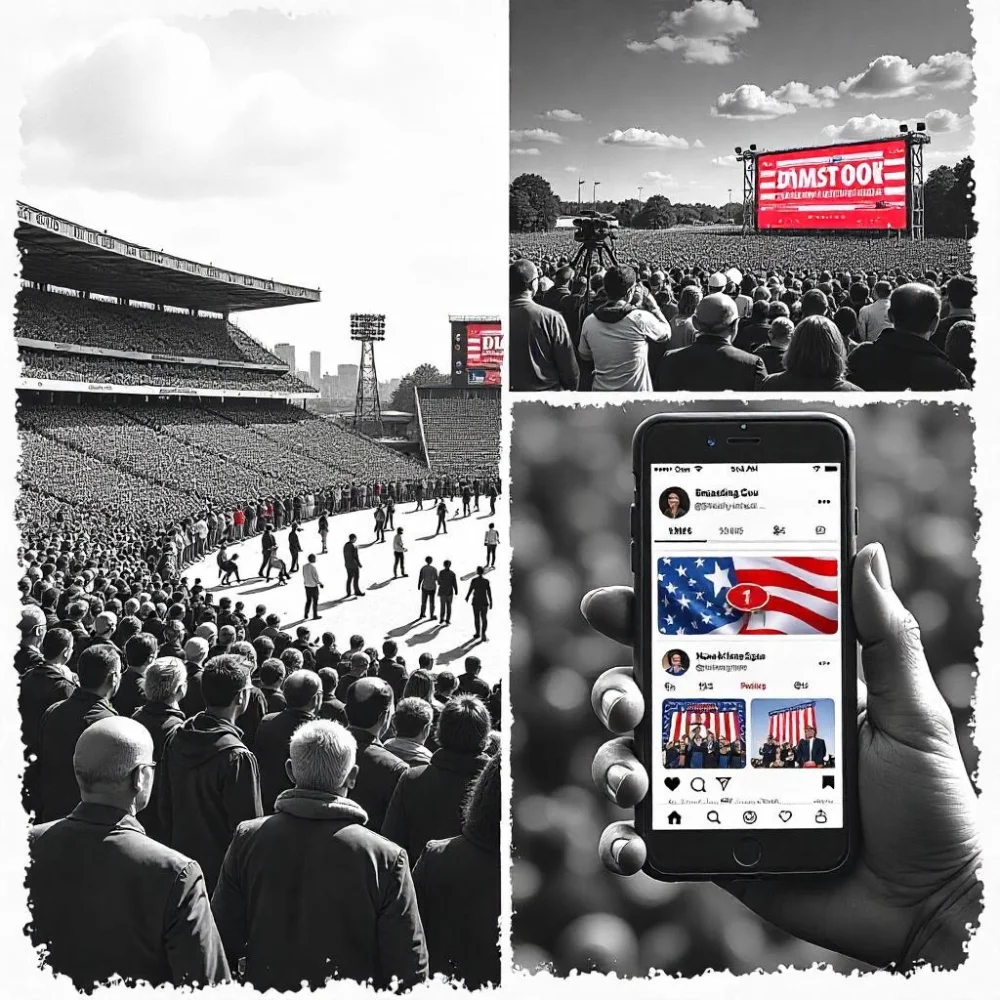
1. Location, Venue & Accessibility
Where a rally is held has a big impact on turnout. Stadiums in major cities can accommodate 20,000+ people, while rural fairgrounds or local arenas may only hold 3,000–5,000. Accessibility also matters; cities with good transport and parking tend to see larger crowds.
2. Timing & Media Coverage
If a rally takes place right after a big news event like a court hearing or a policy announcement, it usually draws more attention. Legal controversies or breaking headlines often increase media coverage, which in turn boosts attendance.
3. Digital & Social Media Mobilization
Trump’s digital base is strong. Platforms like Truth Social, X (formerly Twitter), and Facebook are heavily used to promote events. Viral posts, influencer shares, and MAGA community pages often drive thousands to RSVP or show up at the last minute. The digital push plays a critical role in influencing Trump rally numbers.
Trump vs Biden: Whose Rallies Draw Bigger Crowds?
1. 2020 Recap: Drive-In Events vs Packed Stadiums
In the 2020 election, Biden chose smaller, socially distanced events due to COVID-19. Drive-in rallies with a few hundred people were common. Trump, on the other hand, continued with traditional packed rallies. The contrast made headlines: Trump’s big crowds versus Biden’s cautious approach, but it was more a difference in strategy than popularity.
2. 2024–2025 Comparisons: Who’s Leading in Numbers?
As of 2025, Trump still leads in in-person rally attendance. Biden has held fewer large events, focusing instead on targeted town halls or televised speeches. Estimates suggest that Trump’s rallies still attract an average of 6,000–10,000 people, while Biden’s remain smaller. However, Biden often sees strong viewership numbers for digital events and livestreams, showing that rally size isn’t the only metric of reach.
Does Bigger Crowd Size Mean Electoral Success?
1. The Psychological Impact of Large Crowds
Big crowds create an emotional impact. They generate excitement, confidence, and a feeling of momentum. For undecided voters, seeing thousands cheering for a candidate may influence perception. Media outlets also give more coverage to bigger events, increasing visibility.
2. Past Examples: High Turnout vs Election Results
Still, history shows that large rallies don’t always mean more votes. Hillary Clinton in 2016 had decent-sized crowds but still lost key swing states. Trump’s own 2020 rallies were massive, yet he lost the general election. So while the Trump rally crowd size and votes may seem connected, they don’t always go hand in hand.
Social Media’s Role in Amplifying Rally Perception
1. Viral Videos, Hashtags & Visuals
Short videos of massive cheering crowds often go viral within minutes. MAGA hashtags, edited clips, and high-energy music give the impression of unstoppable momentum. These visuals play a huge role in shaping public opinion, especially among younger or undecided voters.
2. Misinformation, Angles & Framing
Sometimes, crowd visuals are framed to appear larger or more energetic than they are. A tight camera angle, zoomed-in footage, or selective posting times can distort reality. Drone shots and independent reporting help verify actual attendance, countering manipulated impressions.
FAQs
1. How many people attended Trump’s last rally in 2025?
The latest rally in Ohio drew about 7,500 people, based on local police and news estimates.
2. Are Trump’s rally crowd sizes increasing in 2025?
Crowds remain steady but not as large as in 2016 or 2020. Still, Trump’s events are among the largest in this election cycle.
3. Who had larger crowds, Trump or Biden, in 2024?
Trump generally had bigger physical crowds, while Biden saw stronger engagement through digital events and TV appearances.
4. Where can I find Trump’s upcoming rally schedule?
You can check Trump’s official campaign website or follow updates on Truth Social and local event listings.
Conclusion
Trump’s rallies remain a force in American politics. The crowd sizes may fluctuate, but they still lead the pack in physical attendance. They symbolize a loyal base that continues to show up, chant slogans, and support the former president across states. However, it’s important not to overvalue turnout as the only sign of support. Poll numbers, donations, and digital engagement also matter. As the 2025 campaign heats up, we can expect Trump to keep using rallies to drive energy, and the numbers, whether big or small, will always be part of the national conversation.
